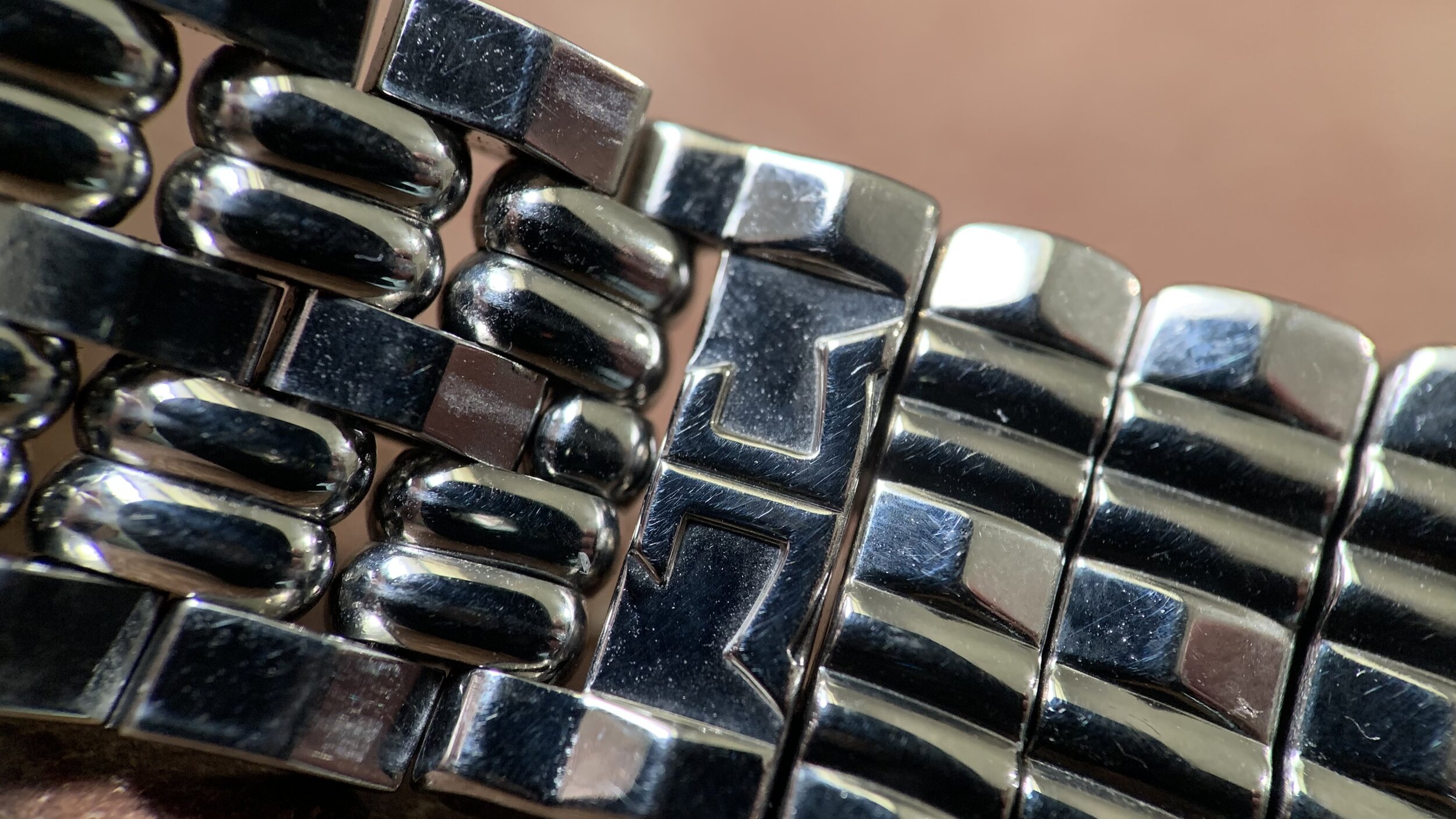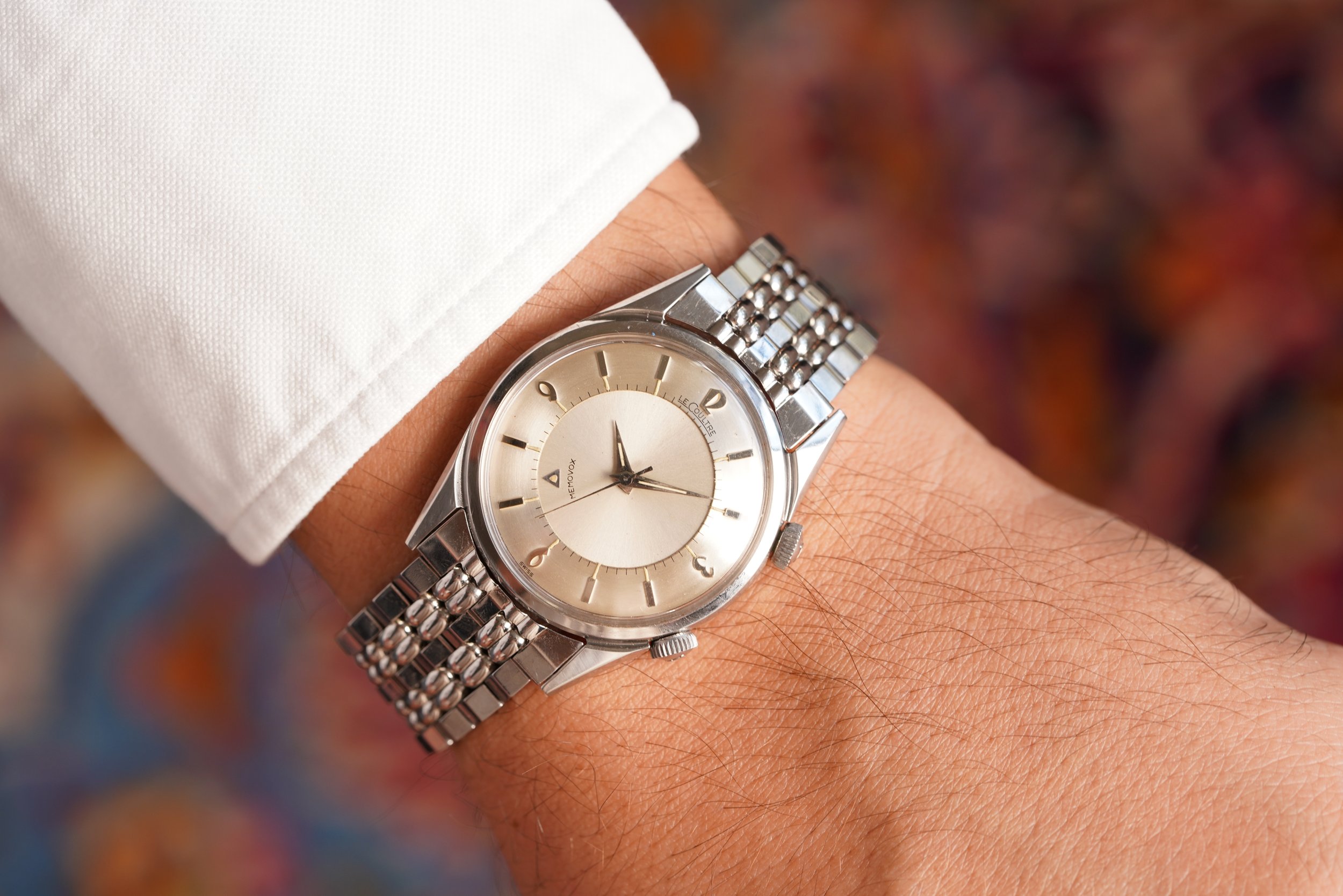
‘Vintage LeCoultre Memovox Reference 2404 (Circa 1960s)’
By Charlie Dunne
Alarm watches were very much the complication to have in the 1950s and 1960s. They were the practical complication that “reminds, warns, or awakens” one throughout their busy lives. To this day, they remain one of the most undervalued complication.
1950 Basel Fair ad of Jaeger-LeCoultre reference 3150 Memovox with hooded lugs powered by the calibre 489. Image credit: Ad Patina
Introduced in 1950, Jaeger-LeCoultre’s alarm wristwatch became one of the seminal lines for the manufacturer. The later defined “Memovox” would take on several adaptations in the form of pocket watches, as well as stationary and travel clocks.
The initial calibre debuting within the Memovox was the calibre 489, present in the adjacent Basel Fair advertisement featuring the pioneer reference 3150. However, just over a year after the introduction, it would be replaced by the calibre 814 which would go on to be used to be used within the manufacturer’s watches for over a decade as a reliable manual wound alarm movement.
Created to usher in an automatic calibre, little changed in the “upgrading” stages of the calibre 814. In 1956, the manufacturer released the first automatic alarm wristwatch via the calibre 815 utilizing a bumper movement. Three years later, the calibre 825 was introduced, incorporating a calendar complication and becoming the first automatic alarm watch with a date function.
Advertisement featuring a vintage Jaeger-LeCoultre with the automatic calibre 815. Image credit: Ad Patina
A few years back, I began to develop a strong affinity for Memovox models of the 1950s and 1960s. At the time, my inclination was to look at the “LeCoultre” only dials as inferior to the fully branded “Jaeger-LeCoultre” models. I based this on my premise that the more expensive examples would often be the later of the two. While a naive assumption in hindsight, I appreciate that my outlook has changed.
It could be argued that the American market Memovox models don’t feature the craftsmanship as the international cases. The difference is quite evident, however, the American casemakers often incorporated more daring designs throughout these decades. This can be seen in LeCoultre timepieces cased by DiVincenzo & Arienti, or the radical Futurematic designs. Angular and geometric lugs can be seen within many of these models, not only in LeCoultre, but a variety of brands. It was an era in which American consumers embraced the dramatic designs from both foreign and domestic watch manufacturers.
LeCoultre advertisement circa 1962. Image credit: http://www.hifi-archiv.info/
While looking to find an advertisement of the present Memovox, I came across a particular one from the early 1960s via http://www.hifi-archiv.info/. The platform is a treasure trove for all types of advertisements, particularly watches and clocks. Although the model would feature seemingly the same Art Deco applied numerals for 6, 9 and 12, the case was evidently different. Also, the model featured within the ad would use an automatic calibre with a date aperture.
As if by fate I would receive a direct message of an Instagram story posted by Nick Gould. Gould is widely recognized as the undisputed watch spotting champion across all decades and genres. In addition, he is a writer for various outlets including Quill & Pad, Monochrome Watches and Time + Tide. I was thrilled to see the exact reference within the advertisement and quickly called in a favor for the link (which he generously sent my way).
Montgomery County Sentinel Dec. 14th, 1961. Image credit: chroniclingamerica.loc.gov
After a small amount of research, the model was identified as the reference 2404 and was powered by the calibre K814 manual wind alarm movement. This calibre was purportedly produced from the early 1950s until the mid 1960s. Dial variations appear to include non-luminous radial Deco numerals (1-12 with non-luminous baton hands). Also, there are both luminous and non-luminous 3,6,9,12 configurations with dauphine hands and baton hands. Models with luminous hands should correspond with both open interior minute track (such as the present one) or a closed track, both of which feature lumed demarcations at each hour. Models with baton hands should not feature any lume.
Within the advertisement, it is worn on a JB Champion (signed Jaeger-LeCoultre). Coincidentally, this style can not only be seen on dress Memovox Marine Alarm, but also the more sport oriented models like the Deep Sea Alarm ref E857. The bracelets were made by two makers: The deployant buckle versions by the celebrated Gay Frères and the flex bracelet versions made by the American company JB Champion.
Image credit: Wind Vintage.
JB Champion bracelet for Jaeger-LeCoultre
While common consensus is that the Gay Frères is was the preeminent bracelet maker, one could argue that JB Champion achieved this reputation within the States. Their bracelets can be found for a wide range of prices, some of which are quite inviting price points. While typically I don’t find the flex bracelets to be my favorite style, the quality of this example is quite impressive. It has a very stiff and durable feel, as if it was not worn frequently throughout its time. The combination of angular links with beads of rice also give a very spirited look on the wrist. The flexible links begin on the interior of the wrist, allowing even those with hairy forearms to not undergo painful wear and tear.

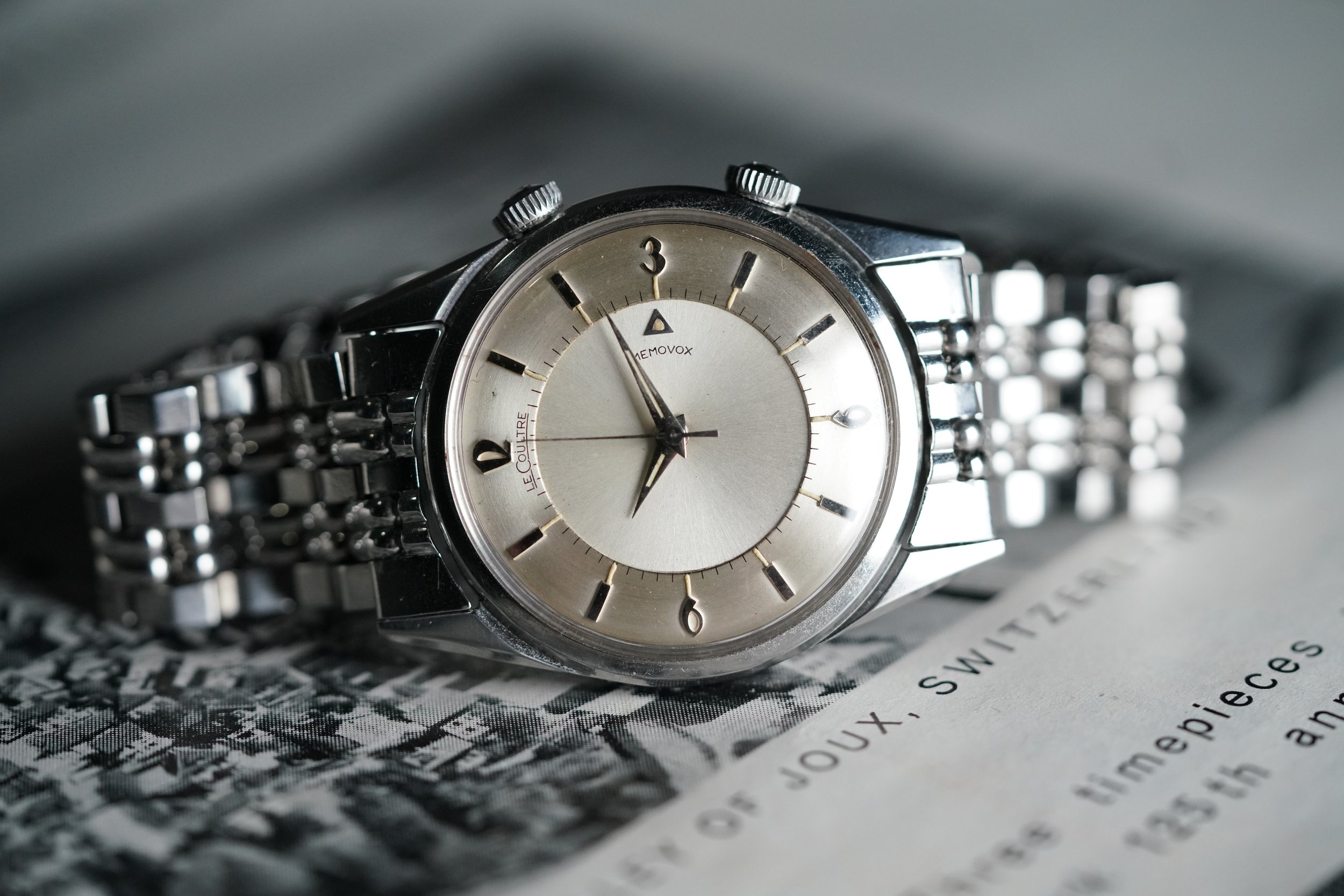
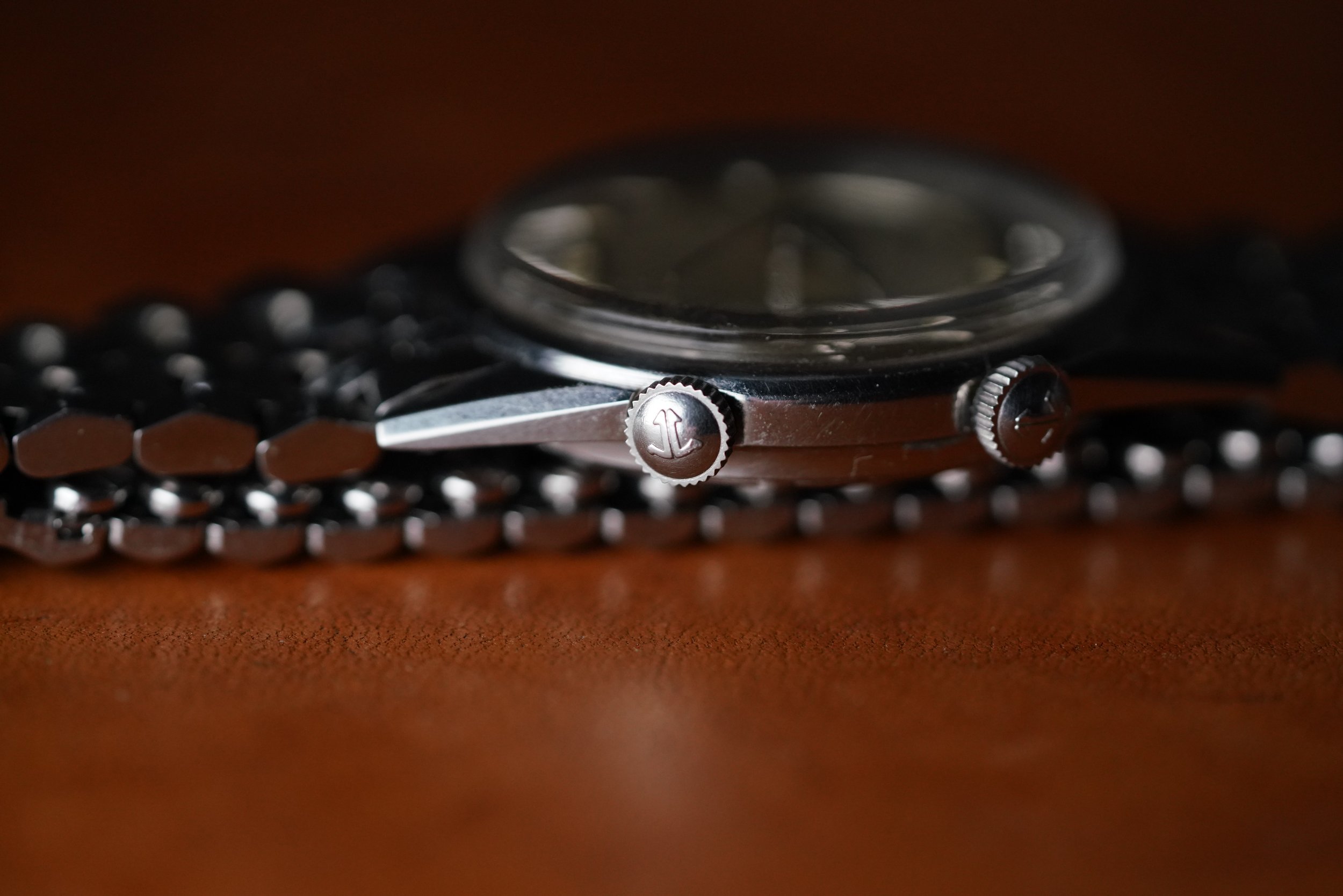
Advertisements
Image credit: The Newark Advocate (Dec. 6th, 1965)
Image credit: The Salem News (Aug. 26th, 1965)
Image credit: Detroit Free Press Oct 4, 1965
The Dial
The dial incorporates a radial sunburst brush on the rotating alarm disk with a luminous triangle and arched “Memovox”. The outer fixed dial is emphatically darker due to the circular brush (or spinning) technique which doesn’t coruscate in the same manner as the center.
Small demarcations for the minutes allow for accuracy while setting the alarm. “SWISS” is written subtly below the 6 numeral. The dial layout can also be seen within some reference 2677s (which features a calibre K910).
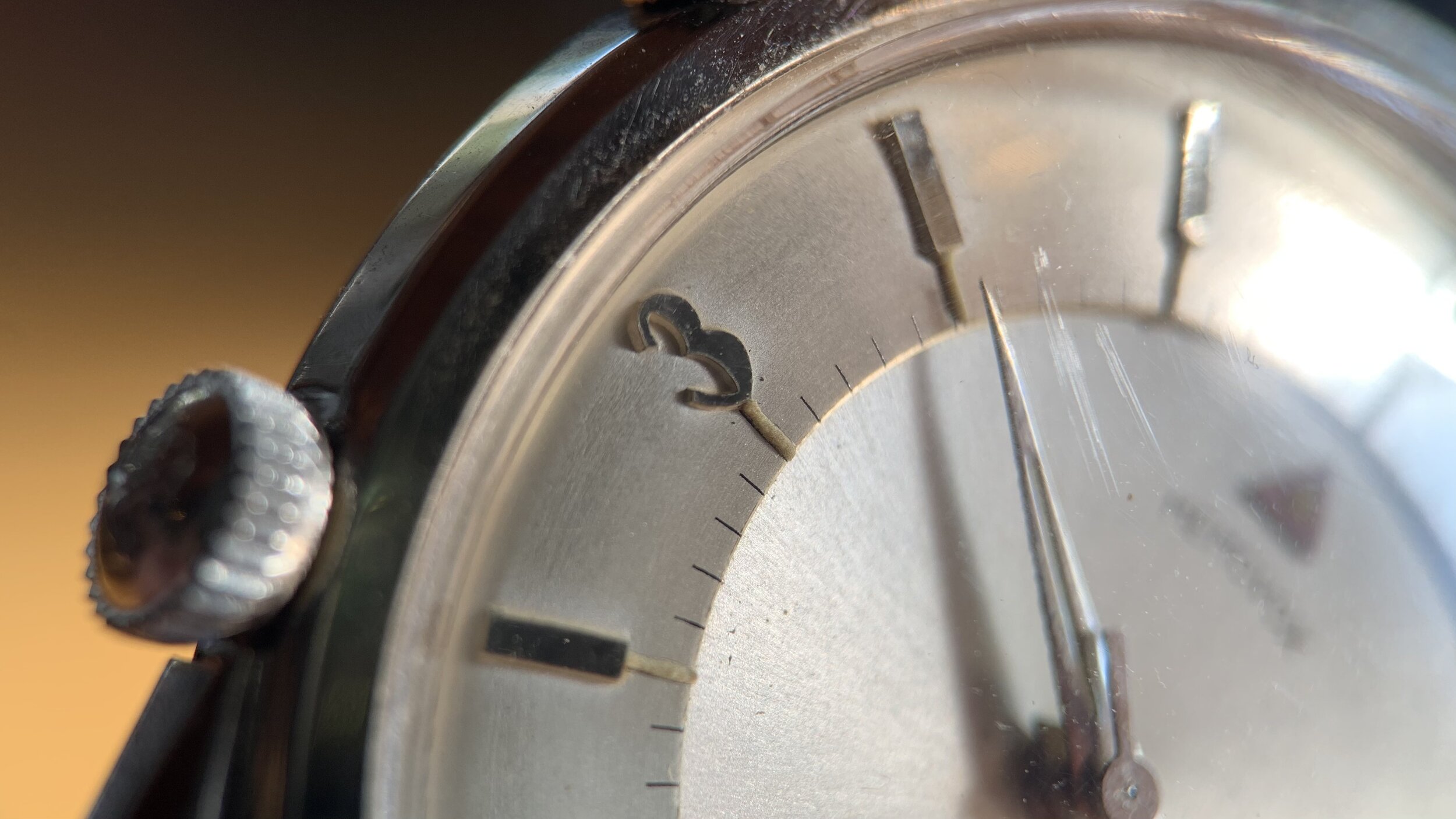

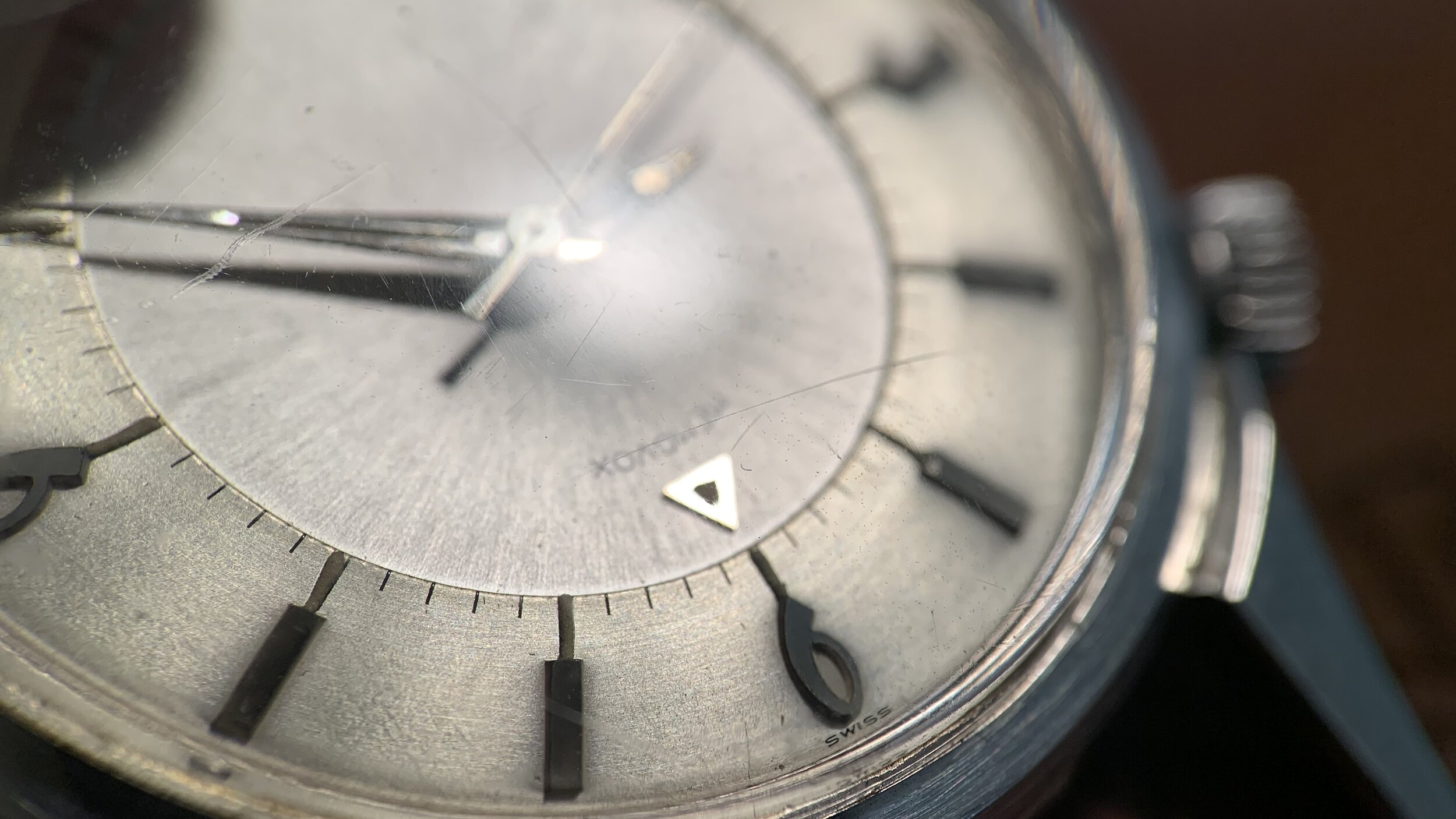
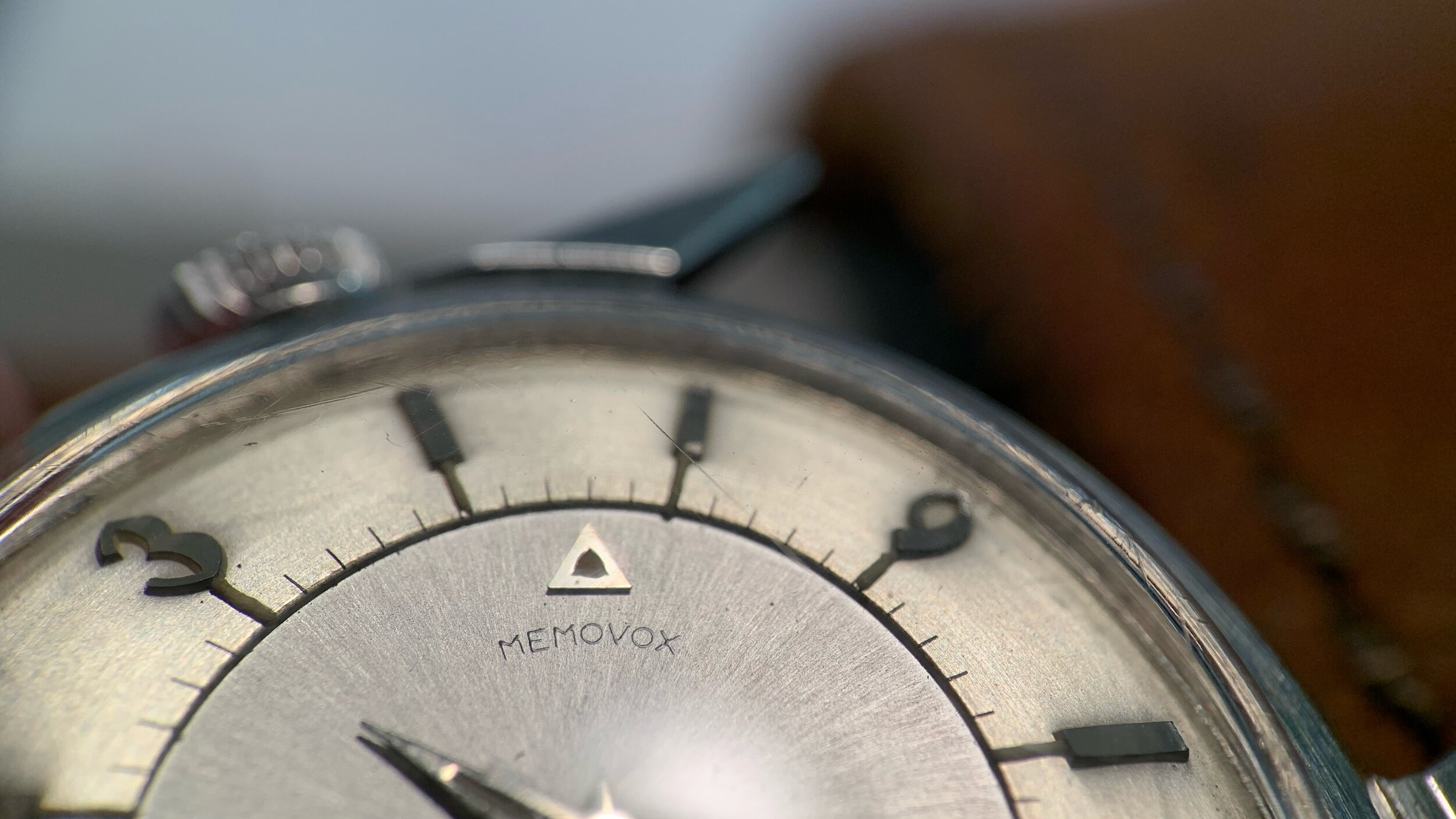

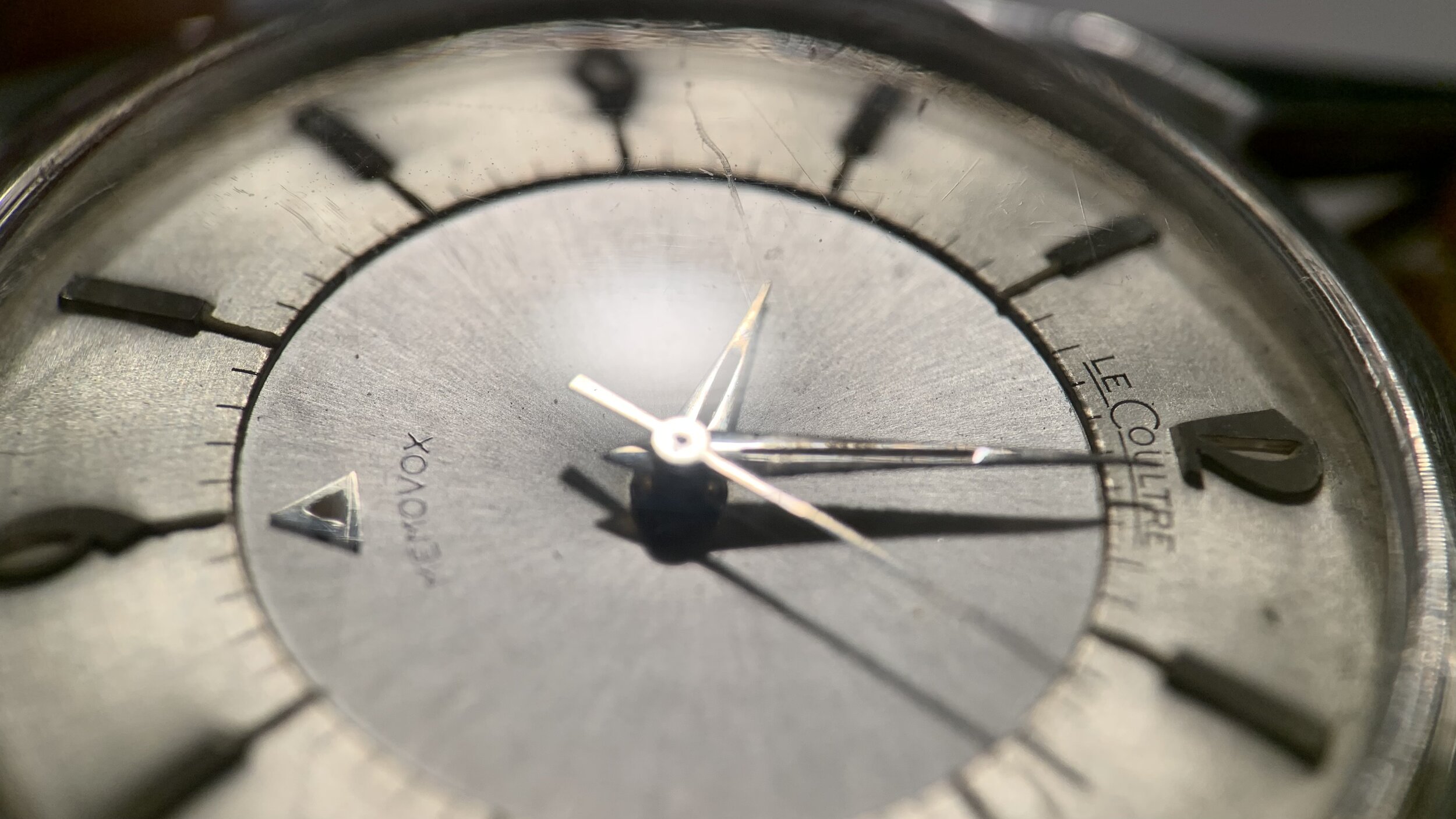
It’s worth emphasizing that within the American market, the name “Memovox” was not necessarily synonymous with the model. By comparison, “LeCoultre Alarm” far outweighed the term “Memovox” within American newspaper ads. Until the late 60s, “Memovox” quite rarely would be seen within adverts. Perhaps it was a matter of the portmanteau of “memory” and “voice” (vox) not resonating with the American consumer. Or it could have also been an attempt by LeCoultre to associate the wristwatch alarm complication with their brand, as the Vulcain Cricket had become one of the most popular watches during the 1950s-1960s.
The Case
The case was made by Star Watch Case Company, a casemaker based out of Ludington, Michigan.
The model’s dimensions are 33.5mm wide (42mm lug-to-lug) with a height of 10mm including the crystal. The lug width is 19mm wide, giving the watch a bit more presence on the wrist than what one would anticipate. The case style is very similar to the one used within the LeCoultre 2405 Quartermaster which can be seen on Blomman Watch Report. The lugs are very angular, complementing the Art Deco style with a more geometric approach.
The crowns are both signed with “JL”. On some American market LeCoultre models, you will see discrepancies with “LeC” in the crowns.
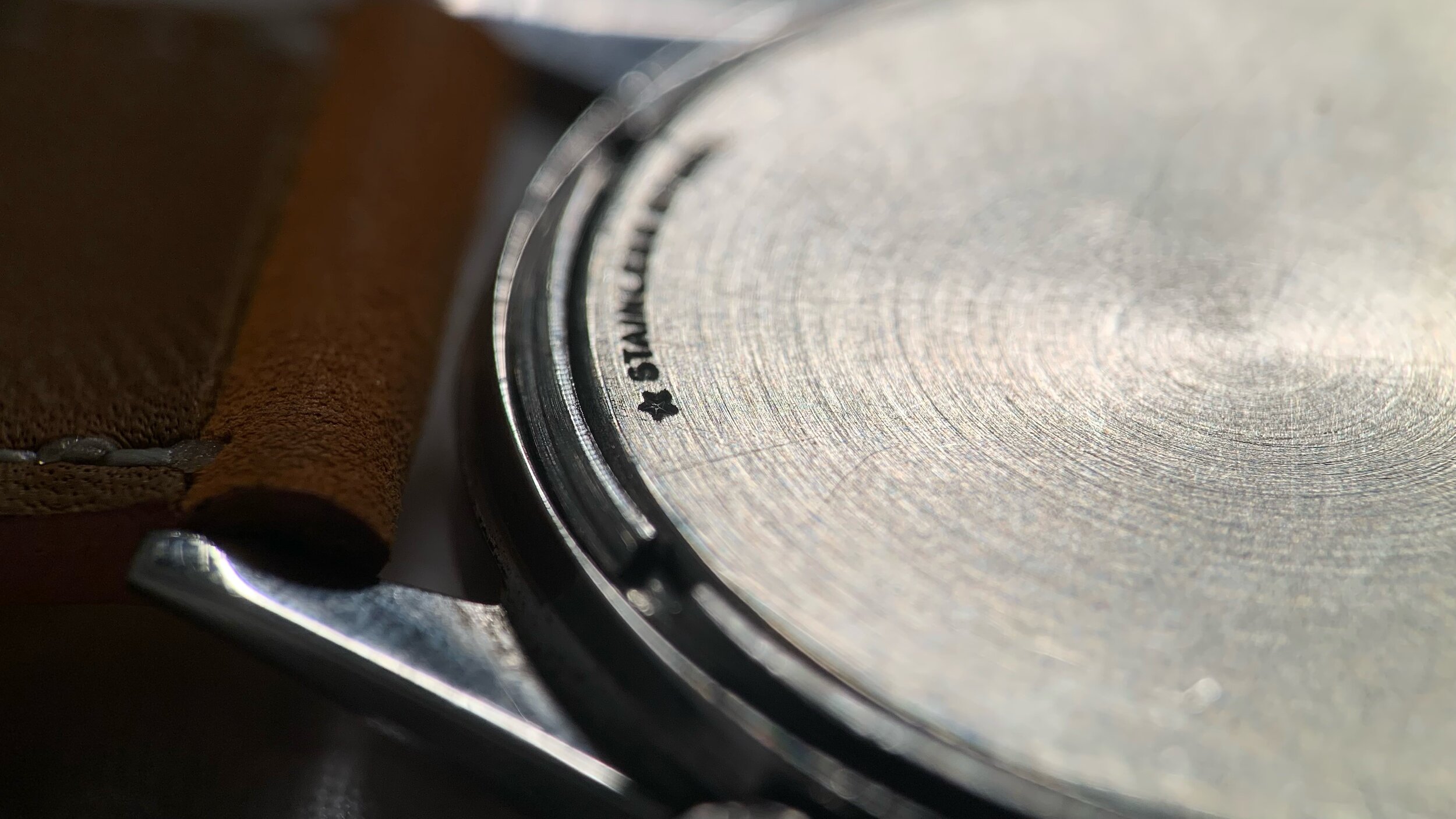
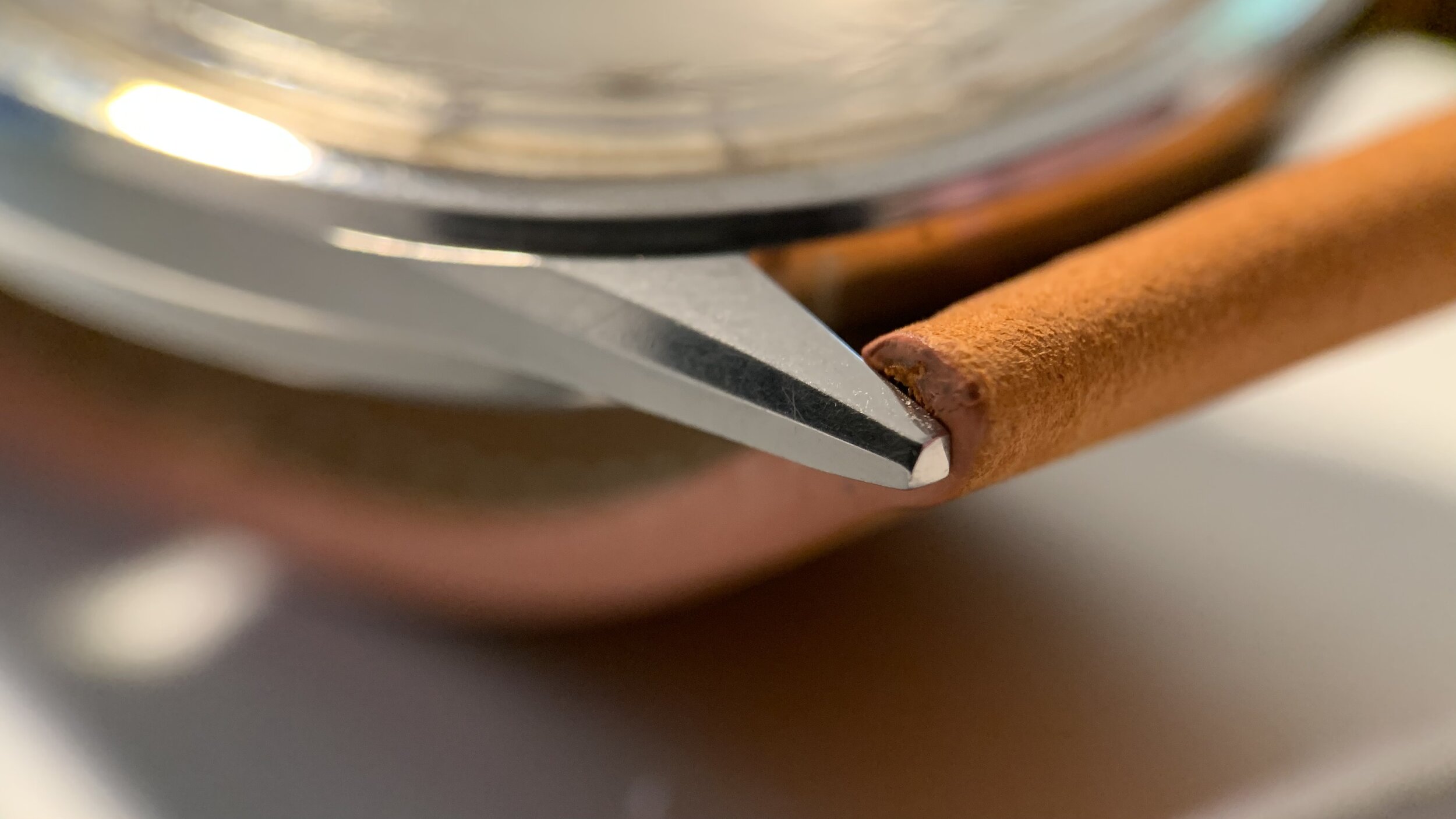
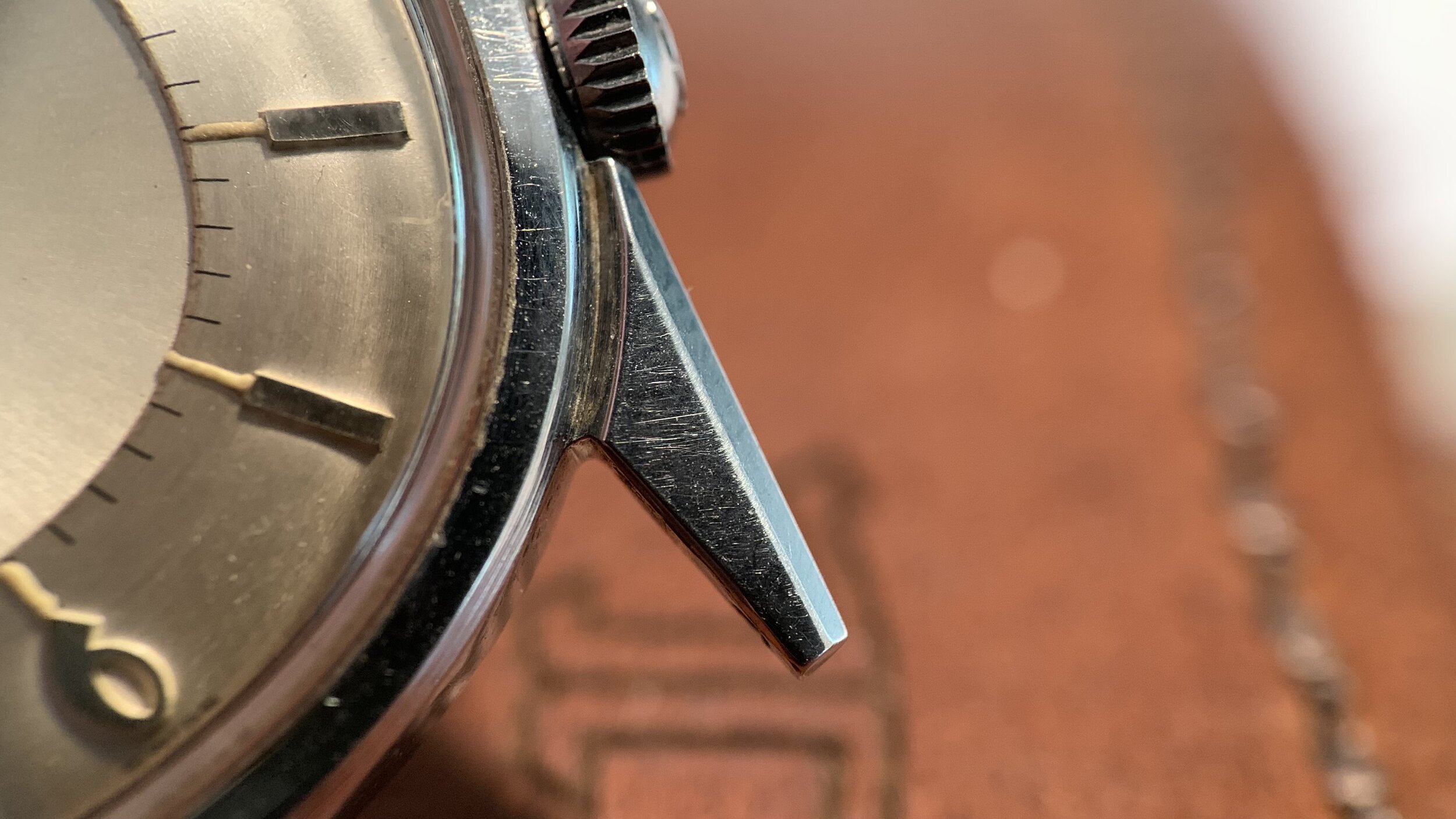
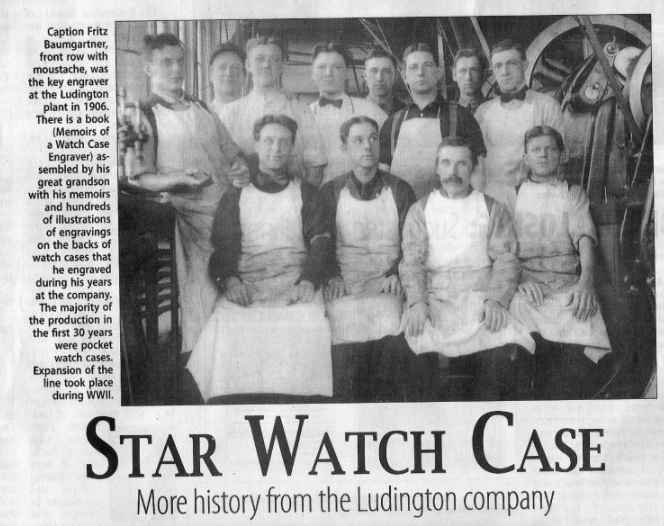
The Alarm
The alarm hammer will strike for up to 20 seconds within the calibre 814. It has a slightly low pitch compared to many of the Vulcain Crickets, mostly based upon the absence of a perforated caseback and metal membrane.
Style
In addition to the bracelet, the watch looks really sharp on a loud colored strap. I’ve opted for an orange Wind Vintage strap made by Nick Gabarro which plays really well with the luminous hour markers and alarm triangle. Also, I paired it with a blue Hermès strap which gives a much more sleek, clean look.
Overall, it is a very fun, American market JLC model that I tend to enjoy for a long time.


To read about other Jaeger-LeCoultre timepieces, see below:
‘A Vintage Jaeger-LeCoultre Memovox Catalog Circa 1958’
‘Collector’s Guide: Jaeger-LeCoultre Memovox Reference E 875’
‘LeCoultre Chronograph Reference 224115’
‘Vintage LeCoultre Memovox Reference 2404 (Circa 1960s)’
‘Vintage LeCoultre 8 Day Alarm Travel Clock Reference 53’
‘Vintage Jaeger-LeCoultre Memovox Reference 3157 aka the “Travalarm”’
Jaeger-LeCoultre Reference 11012 Retailed by Hermès
Jaeger-LeCoultre Memovox Reference E 851
LeCoultre Memodate: A Vintage Gold-Filled Gift For A 13 Year Old Collector
Watches Within A 1938 Men's Fashion Catalog
Photo Gallery Vintage Jaeger-LeCoultre Reference 2957‘
Parechoc and the P450/4C’: What is Parechoc, and what is it doing in my JLC?







